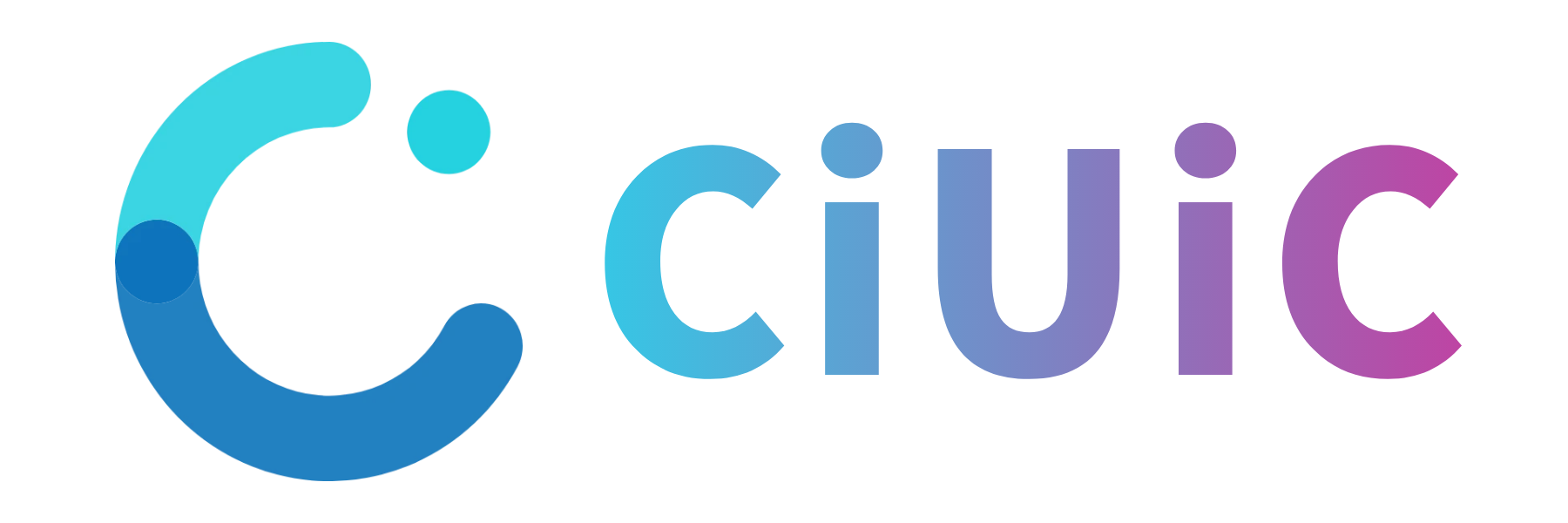Ciuic教育版助力DeepSeek教学实验室:技术驱动的教育普惠方案
:教育普惠的技术挑战与机遇
在数字化时代背景下,教育普惠面临着前所未有的机遇与挑战。传统教育模式受限于地域、资源和经济条件,难以实现真正的教育公平。Ciuic教育版与DeepSeek教学实验室的结合,通过技术创新为解决这一难题提供了可行方案。本文将深入探讨这一技术架构的实现细节,包括核心算法、系统集成方案以及具体代码实现。
系统架构设计
1. 整体技术栈
Ciuic教育版采用微服务架构,主要技术组件包括:
# 示例:系统核心服务定义from fastapi import FastAPIfrom pydantic import BaseModelfrom typing import Listclass EducationalResource(BaseModel): id: str title: str content_type: str accessibility_level: intapp = FastAPI(title="Ciuic教育版核心API")@app.get("/resources/{region_code}", response_model=List[EducationalResource])async def get_resources_by_region(region_code: str, min_access_level: int = 1): """根据区域代码获取可访问的教育资源""" # 实际实现会查询分布式数据库 return mock_resource_service(region_code, min_access_level)2. 与DeepSeek的集成架构
DeepSeek教学实验室的AI能力通过gRPC接口与Ciuic教育版集成:
// education_proto/resources.protosyntax = "proto3";service DeepSeekEducation { rpc RecommendResources (ResourceRequest) returns (ResourceResponse); rpc GeneratePersonalizedContent (ContentRequest) returns (stream ContentChunk);}message ResourceRequest { string user_id = 1; string region_code = 2; repeated string learning_history = 3;}核心算法实现
1. 教育资源智能推荐算法
Ciuic教育版采用改进的协同过滤算法,结合区域教育资源特征:
import numpy as npfrom scipy.sparse import csr_matrixfrom implicit.als import AlternatingLeastSquaresclass EducationalRecommender: def __init__(self): self.model = AlternatingLeastSquares(factors=64, regularization=0.01) def train(self, user_items: csr_matrix, resource_features: np.ndarray): """训练推荐模型""" # 结合资源特征进行加权 weighted_items = user_items.multiply(resource_features) self.model.fit(weighted_items) def recommend(self, user_id: int, known_items: list, top_n: int = 10): """生成个性化推荐""" scores = self.model.recommend(user_id, user_items[user_id], N=top_n) return [(resource_id, score) for resource_id, score in scores]2. 自适应学习路径规划
基于DeepSeek的强化学习算法实现个性化学习路径:
import torchimport torch.nn as nnclass LearningPathModel(nn.Module): def __init__(self, input_dim, hidden_dim, output_dim): super().__init__() self.lstm = nn.LSTM(input_dim, hidden_dim, batch_first=True) self.attention = nn.Sequential( nn.Linear(hidden_dim, 1), nn.Softmax(dim=1) ) self.fc = nn.Linear(hidden_dim, output_dim) def forward(self, x): lstm_out, _ = self.lstm(x) attn_weights = self.attention(lstm_out) context = torch.sum(attm_weights * lstm_out, dim=1) return self.fc(context)关键技术实现细节
1. 低带宽环境优化
针对偏远地区低带宽环境,我们开发了特殊的内容压缩算法:
// EducationalContentCompressor.javapublic class EducationalContentCompressor { private static final int MAX_QUALITY = 90; private static final int MIN_QUALITY = 30; public byte[] adaptiveCompress(byte[] input, float bandwidth) { int quality = calculateQuality(bandwidth); try (ByteArrayOutputStream baos = new ByteArrayOutputStream()) { BufferedImage image = ImageIO.read(new ByteArrayInputStream(input)); ImageWriter writer = ImageIO.getImageWritersByFormatName("jpeg").next(); ImageWriteParam param = writer.getDefaultWriteParam(); param.setCompressionMode(ImageWriteParam.MODE_EXPLICIT); param.setCompressionQuality(quality / 100.0f); writer.setOutput(ImageIO.createImageOutputStream(baos)); writer.write(null, new IIOImage(image, null, null), param); return baos.toByteArray(); } catch (IOException e) { throw new RuntimeException("压缩失败", e); } } private int calculateQuality(float bandwidth) { // 根据带宽动态计算质量参数 return Math.min(MAX_QUALITY, Math.max(MIN_QUALITY, (int)(bandwidth / 100 * MAX_QUALITY))); }}2. 离线学习支持系统
针对网络不稳定地区,设计了智能缓存和同步机制:
// offlineManager.jsclass OfflineManager { constructor(dbName, version) { this.dbPromise = idb.openDB(dbName, version, { upgrade(db) { db.createObjectStore('resources', { keyPath: 'id' }); db.createObjectStore('progress', { keyPath: 'lessonId' }); } }); } async cacheResources(resources) { const db = await this.dbPromise; const tx = db.transaction('resources', 'readwrite'); await Promise.all([ ...resources.map(resource => tx.store.put(resource) ), tx.done ]); } async syncProgress() { const db = await this.dbPromise; const progress = await db.getAll('progress'); if (navigator.onLine) { await fetch('/api/sync-progress', { method: 'POST', body: JSON.stringify(progress) }); await db.clear('progress'); } }}系统性能优化
1. 分布式资源加载
// resource_load_balancer.gopackage mainimport ( "context" "log" "time" "github.com/redis/go-redis/v9")type ResourceLoadBalancer struct { redisClient *redis.Client regionNodes map[string][]string}func NewLoadBalancer(redisAddr string) *ResourceLoadBalancer { return &ResourceLoadBalancer{ redisClient: redis.NewClient(&redis.Options{ Addr: redisAddr, Password: "", DB: 0, }), }}func (lb *ResourceLoadBalancer) GetOptimalNode(region string) (string, error) { ctx, cancel := context.WithTimeout(context.Background(), 500*time.Millisecond) defer cancel() // 获取区域所有节点 nodes := lb.regionNodes[region] if len(nodes) == 0 { return "", errors.New("no available nodes for region") } // 使用Redis原子计数器实现轮询 counterKey := "lb:" + region counter, err := lb.redisClient.Incr(ctx, counterKey).Result() if err != nil { return nodes[0], nil // 降级处理 } selected := nodes[counter%int64(len(nodes))] return selected, nil}2. 实时协作学习引擎
// collaborationEngine.tsimport { WebSocket } from 'ws';import { v4 as uuidv4 } from 'uuid';type CollaborationSession = { id: string; participants: Map<string, WebSocket>; documentState: any;}class CollaborationEngine { private sessions: Map<string, CollaborationSession> = new Map(); createSession(initialDoc: any): string { const sessionId = uuidv4(); this.sessions.set(sessionId, { id: sessionId, participants: new Map(), documentState: initialDoc }); return sessionId; } joinSession(sessionId: string, userId: string, ws: WebSocket) { const session = this.sessions.get(sessionId); if (!session) throw new Error('Session not found'); session.participants.set(userId, ws); this.broadcastPresence(session); ws.send(JSON.stringify({ type: 'INIT', payload: session.documentState })); } private broadcastPresence(session: CollaborationSession) { const presence = { type: 'PRESENCE', payload: Array.from(session.participants.keys()) }; session.participants.forEach(ws => { ws.send(JSON.stringify(presence)); }); }}部署架构与规模化
Ciuic教育版采用混合云架构,核心部署模式如下:
# deployment.yamlapiVersion: apps/v1kind: Deploymentmetadata: name: ciuic-education-corespec: replicas: 10 selector: matchLabels: app: ciuic-edu template: metadata: labels: app: ciuic-edu spec: containers: - name: main image: ciuic/education-core:v3.2.1 ports: - containerPort: 8080 resources: limits: cpu: "2" memory: 2Gi env: - name: REDIS_HOST value: "redis-cluster.default.svc.cluster.local" - name: DEEPSEEK_ENDPOINT value: "https://deepseek-api.example.com/v1"---apiVersion: v1kind: Servicemetadata: name: ciuic-educationspec: selector: app: ciuic-edu ports: - protocol: TCP port: 80 targetPort: 8080 type: LoadBalancer成效评估与数据分析
系统内置了完善的数据分析管道:
# analytics_pipeline.pyimport pandas as pdfrom sklearn.metrics import silhouette_scorefrom sklearn.cluster import KMeansclass LearningAnalytics: def __init__(self, data_path): self.data = pd.read_parquet(data_path) def analyze_regional_engagement(self): """分析区域参与度模式""" engagement_metrics = self.data.groupby('region')[ ['time_spent', 'completion_rate', 'resource_accessed'] ].mean() # 聚类分析找出相似区域 kmeans = KMeans(n_clusters=5) clusters = kmeans.fit_predict(engagement_metrics) engagement_metrics['cluster'] = clusters return engagement_metrics def calculate_impact_score(self): """计算教育普惠影响分数""" baseline = self.data[self.data['is_control'] == True] treatment = self.data[self.data['is_control'] == False] score = ( treatment['learning_gain'].mean() / baseline['learning_gain'].mean() - 1 ) * 100 return score未来发展方向
边缘计算集成:将更多AI推理能力下沉到边缘节点区块链认证:构建去中心化的学习成就认证系统AR/VR支持:增强边远地区的沉浸式学习体验自适应界面:基于学生设备能力自动调整交互模式Ciuic教育版与DeepSeek教学实验室的技术整合,为教育普惠提供了坚实的技术基础。通过文中所展示的系统架构、核心算法和优化策略,我们能够将高质量教育资源有效地传递到每一个需要的角落。未来,随着技术的不断演进,这种模式有望成为教育公平的标准化解决方案,真正实现"人人皆学、处处能学、时时可学"的教育理想。
免责声明:本文来自网站作者,不代表CIUIC的观点和立场,本站所发布的一切资源仅限用于学习和研究目的;不得将上述内容用于商业或者非法用途,否则,一切后果请用户自负。本站信息来自网络,版权争议与本站无关。您必须在下载后的24个小时之内,从您的电脑中彻底删除上述内容。如果您喜欢该程序,请支持正版软件,购买注册,得到更好的正版服务。客服邮箱:ciuic@ciuic.com







